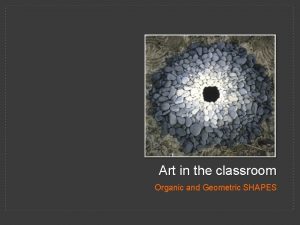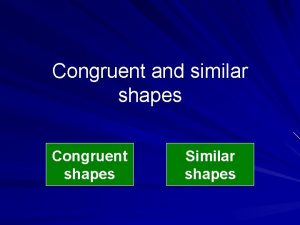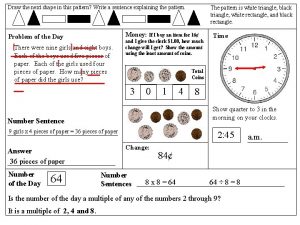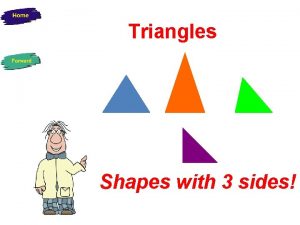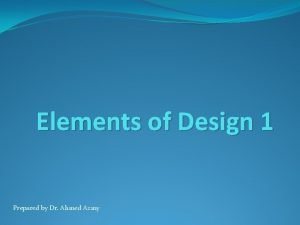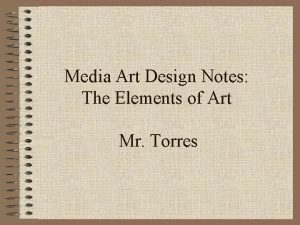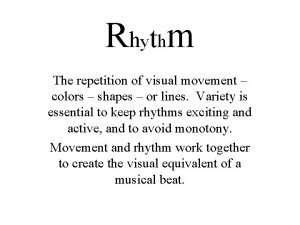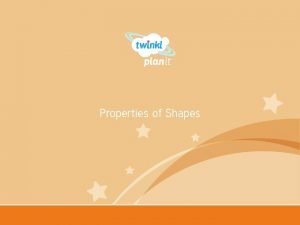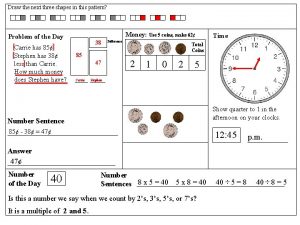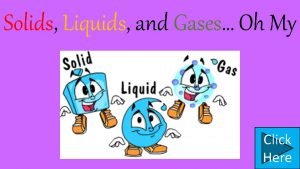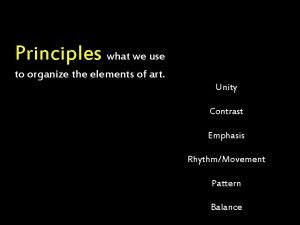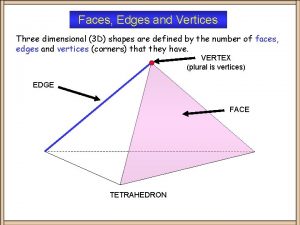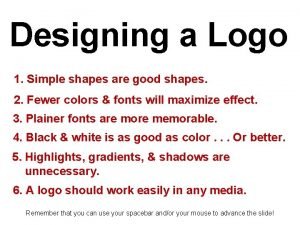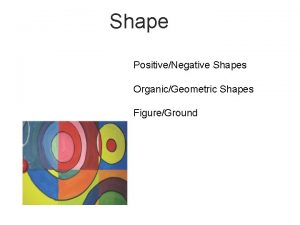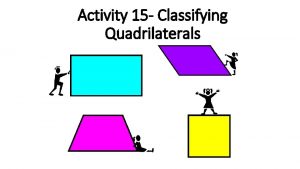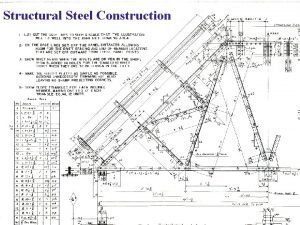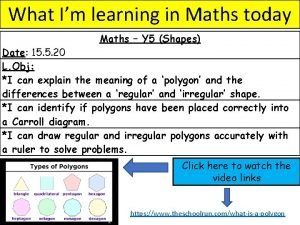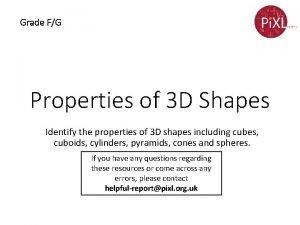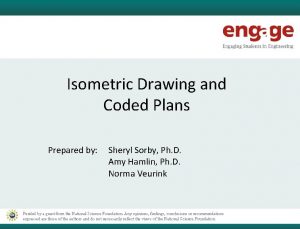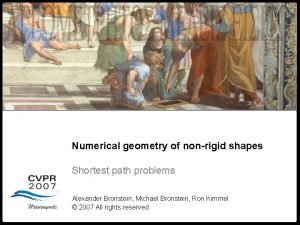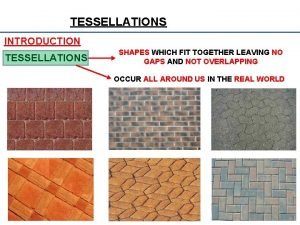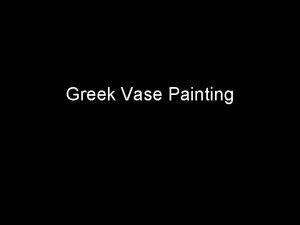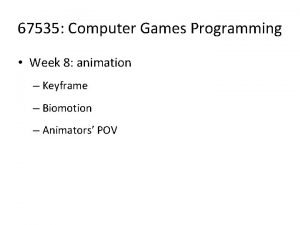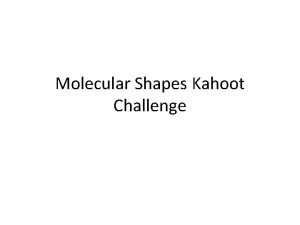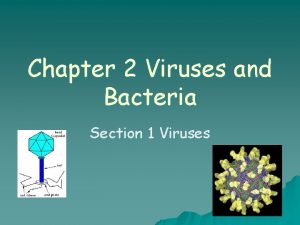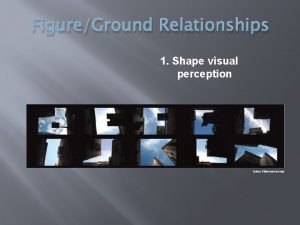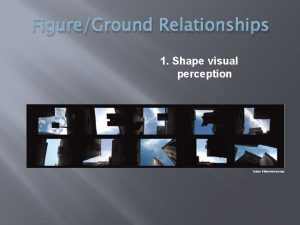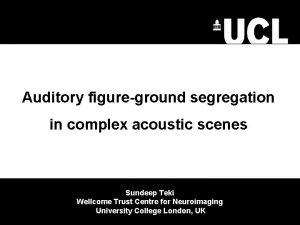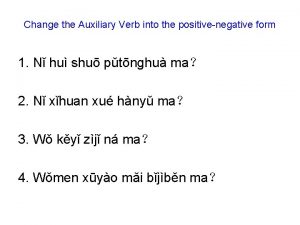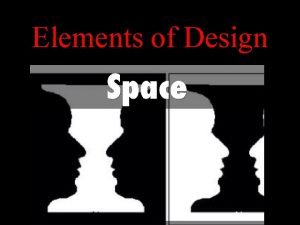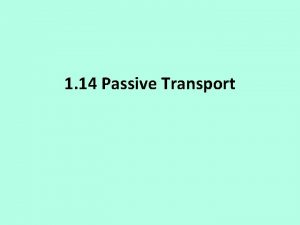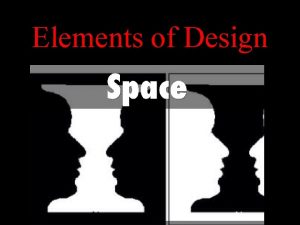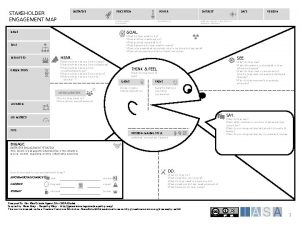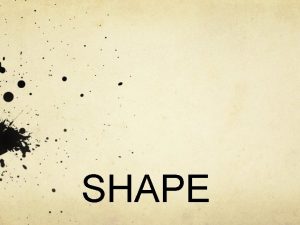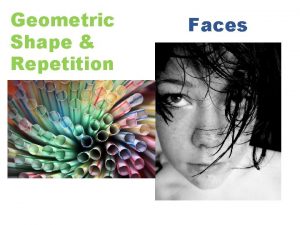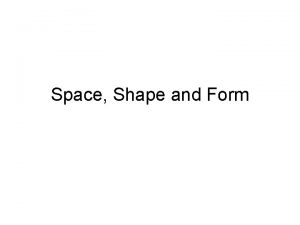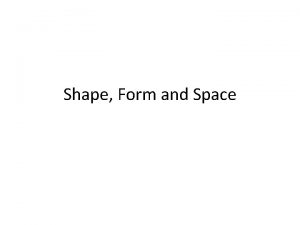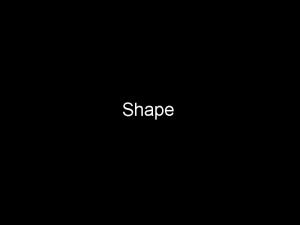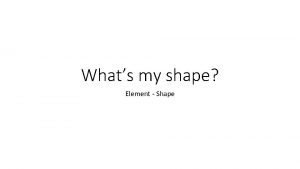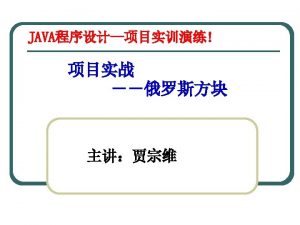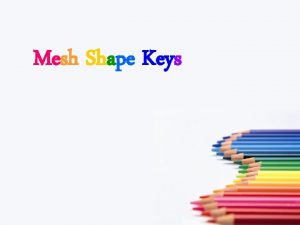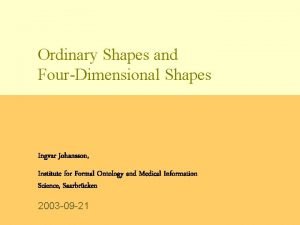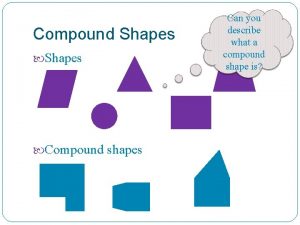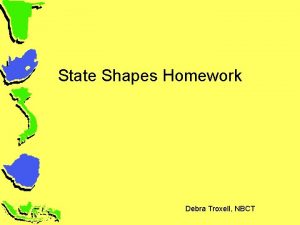Shape PositiveNegative Shapes OrganicGeometric Shapes FigureGround Shape A





































- Slides: 37

Shape Positive/Negative Shapes Organic/Geometric Shapes Figure/Ground

Shape: A two-dimensional closed or implied closed configuration. The two categories of shape are organic and geometric shape l o n d o n

Depending on its location relative to the ground, the figure can become dynamic or static, leaden or bouyant.

Organic shape: Free form shape, also called biomorphic llllllllllllllllllllllllllllllll

Van Gogh’s Cypress Trees

Geometric shape: A shape created by mathematical laws and measurements, such as a circle or a square.


Native American, Woven Basket, BMA, Baltimore

Positive shape: The shape of an object that serves as the subject for a drawing. The relationship between positive shape and negative space is sometimes called figure/field, foreground/background, or solid/void relationship.

Franz Kline, Untitled, 1957

I'

Alexander Calder, painted welded steel

Implied shape: a suggested or incomplete shape that is "filled in" by the viewer.

Figure Ground Ambiguity Figure ground ambiguity is the visual illusion with two alternate viewpoints. In this version of figure ground, a pair of objects share a similar edge. This illusion is created by the inversion of figure and ground. A well-renowned figure example is Rubin’s Vase, developed by psychologist Edgar Rubin. In this image the black positive space forms two faces that appear to be ready to kiss, and the inverse negative space forms a vase. Visually the concentration on either the white or the black makes the illusion alternate between the vase and the faces.




Ambiguous Figure/Ground Cezanne Rocks Near the Caves above the Chateau Noir, 1904

Figure/Ground Reversal Figure ground reversal is the inversion of background and foreground. M. C. Escher Sky and Water I 1938


Volume: The quality of a form that has height, width, and depth, the representation of this quality. Mass: The illusion of weight or density.



Integration: Geometric & Organic Shapes Positive & Negative Space


Elizabeth Murray



Project #3 Positive and Negative Space The object behind this problem is to make it impossible to cut a positive shape and ignore its negative twin. If the positive shape you cut it clumsy, its negative space will be clumsy also, but neither can be discarded. If the cuts are not repeated symmetrically, the choice of an asymmetrical cut will require a search for asymmetrical balance. 1. Changing the identity of a shape - Destroying a Square - Cut a 5” square of black construction paper. Then cut it up and use the pieces to make a design on white 9”x 12” Bristol board in which observers will not recognize the original square. Do that same with a circle. Use all the pieces. 2. Reassembling the identity of a shape – Using a 5” Square of black construction paper. Cut it into pieces. Arrange them on a white 9”x 12” Bristol board in such a way that the design still retains the original shape. Do the same with a circle. Use all the pieces.

Destroying the identity of a shape (Circle)

Destroying the identity of a shape (Square)

Reassembling the identity of a shape (Circle)

Reassembling the identity of a shape (Square)

NOTAN – The play of light and dark Notan Nōtan is a Japanese design concept involving the play and placement of light and dark elements as they are placed next to the other in the composition of art and imagery


Notan

 Shapes that seem to follow no rules
Shapes that seem to follow no rules How to tell if shapes are similar
How to tell if shapes are similar Similar shapes and proportions lesson 4-1
Similar shapes and proportions lesson 4-1 Shape matching and object recognition using shape contexts
Shape matching and object recognition using shape contexts Bolongie
Bolongie Airfoil nomenclature
Airfoil nomenclature Draw the next shape in the pattern
Draw the next shape in the pattern What shape has 6 faces 12 edges and 8 vertices
What shape has 6 faces 12 edges and 8 vertices Shapes with 3 sides
Shapes with 3 sides Clustered form architecture
Clustered form architecture Shapes can be actual tactile or visual
Shapes can be actual tactile or visual Regular rhythm in art
Regular rhythm in art Oppsite angle
Oppsite angle Draw the next shape in the pattern
Draw the next shape in the pattern Vsper shapes
Vsper shapes Solid shapes for kids
Solid shapes for kids Shape with 2 sets of parallel sides
Shape with 2 sets of parallel sides A hard surface on which you place foods to be cut.
A hard surface on which you place foods to be cut. Whats a concrete poem
Whats a concrete poem Opposing size shapes contrasting colors
Opposing size shapes contrasting colors Tetrahedron faces edges vertices
Tetrahedron faces edges vertices Knock off logos
Knock off logos What is a positive shape
What is a positive shape Legs of a trapezoid
Legs of a trapezoid Structural shapes
Structural shapes Heptagon shape
Heptagon shape 3d shape diagram
3d shape diagram Isometric drawing lesson plan
Isometric drawing lesson plan Numerical geometry of non-rigid shapes
Numerical geometry of non-rigid shapes Shapes that fit together
Shapes that fit together Shapes with one pair of parallel sides
Shapes with one pair of parallel sides Exekias achilles and ajax playing a dice game
Exekias achilles and ajax playing a dice game Half turn symmetry
Half turn symmetry Atom shapes
Atom shapes Blend shapes
Blend shapes Kahoot shapes
Kahoot shapes Molecular shapes
Molecular shapes Three basic shapes of bacteria
Three basic shapes of bacteria
